Fredric Brown, Stanley G. Weinbaum, and Appendix N: Advanced Readings in D&D
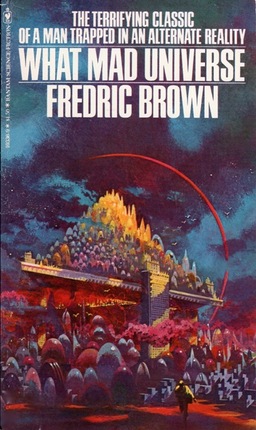 Time to get caught up with the tireless Mordicai Knode and Tim Callahan, as they trek towards the finish line of their epic Appendix N re-read over at Tor.com.
Time to get caught up with the tireless Mordicai Knode and Tim Callahan, as they trek towards the finish line of their epic Appendix N re-read over at Tor.com.
This time, they take a look at two names very familiar to Black Gate readers: Fredric Brown and Stanley G. Weinbaum, both of whom we’ve discussed recently, and at considerable length.
In fact, just last week I examined The Best of Fredric Brown, calling it “one of the best short story collections I’ve read in years.” Any collection which included “Arena,” “Puppet Show,” and “The Geezenstacks” has to be considered a classic, and I was looking forward to seeing what our intrepid literary explorers thought of it.
Not much, going by Tim’s analysis:
A spaceman single-handedly battles for the fate of the human race. A god plays war games with knights and bishops. Test tube babies become the new anointed ones. A mountaineer comes face-to-face with a yeti. Earth’s first contact with Mars goes horribly awry.
These are things that happen in the stories, often very short stories, of Fredric Brown. I can see why Gary Gygax liked them.
Unfortunately, their connection to Dungeons & Dragons is vague at best. They seem to fall into a category that, after reading most of these Appendix N recommendations, I can now confidently call Somewhat Clever Things Gary Gygax Enjoyed but are Pretty Tedious to Read Today.
Like the works of L. Sprague de Camp and Fletcher Pratt, the stories by Fredric Brown seem to be the kinds of tales that would delight Gygax with their intellectual playfulness and that might be reason enough for their inclusion on his list of recommended reading, but the cleverness only goes so far, and the stories feel pretty thin otherwise.
Bah. I don’t mean to critique the critic, but I think Tim was asleep at the switch here. Maybe he should have read these magical tales on a long plane-ride to Las Vegas, like I did, instead of hunched over his laptop, thirty minutes before deadline.
To be fair to Tim, I think he’s straining a little too hard to find a solid connection to Dungeons and Dragons, when there obviously isn’t one.
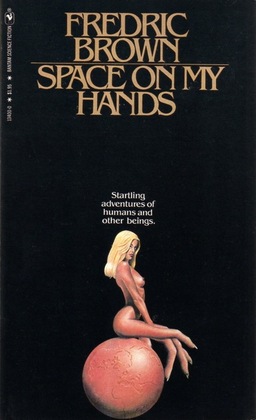 Fredric Brown died in 1972, four years before D&D was published, and he wrote the bulk of his most famous fiction between 1940-1968. His fiction isn’t secondary-world fantasy filled with marvelous magical items and creative spells, like Jack Vance, or set in intricately crafted realms rich with royal intrigue, like Roger Zelazny. It’s chiefly set in the present day, with one or two fantastic elements that don’t really suit being included in the magic item tables in the DMG.
Fredric Brown died in 1972, four years before D&D was published, and he wrote the bulk of his most famous fiction between 1940-1968. His fiction isn’t secondary-world fantasy filled with marvelous magical items and creative spells, like Jack Vance, or set in intricately crafted realms rich with royal intrigue, like Roger Zelazny. It’s chiefly set in the present day, with one or two fantastic elements that don’t really suit being included in the magic item tables in the DMG.
It’s clear to me that Gygax included Fredric Brown in Appendix N not because D&D players would find his work a rich trove of resources for world-building, but rather for the obvious craft of his storytelling and his ability to constantly surprise. And because he told damn good stories.
Still, Tim makes a valiant effort to justify the inclusion of Fredric Brown for those who are constantly mining the list for something to help with their game design:
It’s impossible to talk about Fredric Brown stories without spoiling them, because they are twist-delivery systems in a sleek and simple prose shell… If they were television shows, well, they’d be Twilight Zone episodes, as I mentioned, but they’d be five-minute-long versions, with a wah-wah-wah fail sound effect at the end.
If they were role-playing game adventures, they would be three-room dungeons where the third room was a trap of the players’ own devising. Or a ruined castle that’s actually just inside a snow globe and the characters are trapped forever in the hands of a child. And so on.
Maybe Gary Gygax’s original concept for The Deck of Many Things was The Deck of Fredric Brown-Inspired Stuff. Just maybe.
I don’t actually think that’s true, but the tricks and traps and cruelly unfair stuff monsters can sometimes do in the Dungeon Masters Guide and the Monster Manual meshes with the core Fredric Brown sensibility. A dose of irony, a lot of unluck, and a twist that isn’t really funny, but is definitely unexpected. Except when it’s completely expected.
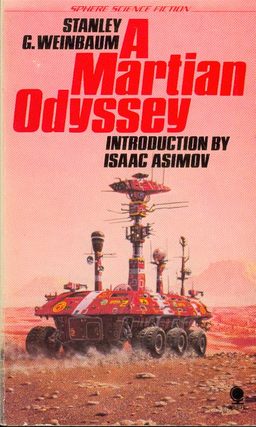 I guess we’ll just have to agree to disagree on Fredric Brown.
I guess we’ll just have to agree to disagree on Fredric Brown.
You can read Tim’s complete review here.
Next we move on to Stanley G. Weinbaum, one of the greatest pulp science fiction writers, who tragically passed away in 1935, at the age of 33, but who is still fondly remembered today.
I discussed Weinbaum back in August, in my fond look back at The Best of Stanley G. Weinbaum, the book which Lester del Rey chose to kick off his epic Classics of Science Fiction series. It turned out to be the perfect choice, as the book sold very well, going through multiple printings, and proving the market for the 22 titles that followed.
If del Rey had chosen a different author, the series might never have happened at all.
Right. We all appreciate how great Weinbaum is, and his place of honor in the canon of pulp SF. Let’s see what Mordicai Knode makes of our pulp hero, as he examines his collection A Martian Odyssey.
Another science fiction collection that doesn’t have any obvious bearing on the history of the hobby, though I will argue a bit further on that it does have elements that a good Dungeon Master could learn from, and if those sorts of things are consistent across Weinbaum’s oeuvre, I can see why Mister Gygax picked Weinbaum. I bet they are!
While “A Martian Odyssey” isn’t particularly “DnD” on the face of it, I think it actually does show how a good worldbuilder or Dungeon Master should think. Oh, also it is phenomenal… The thing about all of the xenobiology here is that…well, it is plausible. It holds up, eighty years later, because it is well considered. So besides the fact that there are creatures who superficially resemble a couple of Monster Manual beasties, that is the lesson I think we should take away. When you build a world, or a dungeon, or anything, really, you should take a moment to think about the psychology and the ecology of the stuff you put into it.
In fact, setting aside his inclination to judge Weinbaum solely from the point of view of a Dungeon Master looking for inspiration, I think he’s got a good point here. As Asimov noted in his introduction to The Best of Stanley G. Weinbaum:
“A Martian Odyssey” had the effect on the field of an exploding grenade… Weinbaum was instantly recognized as the world’s best living science fiction writer, and at once almost every writer in the field tried to imitate him.
Weinbaum taught other pulp SF writers about worldbuilding, showed how to create an ecology that made sense (or, at a minimum, appeared to make sense to the reader), and that’s a lesson that every DM needs to take to heart.
Mordicai wraps up his review with a final clever observation on the appeal of Weinbaum’s pulp fiction to modern D&D players:
Perhaps this doesn’t superficially resemble what you expect when you think of D&D, with astronauts and aliens instead of wizards and monsters. But at a deep core level, the stories contained in A Martian Odyssey are about exploring weird places — even a weird dungeon — and meeting weird creatures and occasionally stealing incredible magic items. That sure sounds “DnD” to me.
Yup.
You can read Mordicai’s complete article here.
It’s very difficult to obtain copies of the pulp magazines where Stanley G. Weinbaum’s fiction originally appeared today, and his collections A Martin Odyssey and The Best of Stanley G. Weinbaum have both been out of print for over 30 years.
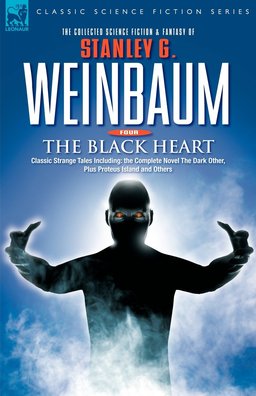 Fortunately, Leonaur has collected the complete novels and short fiction of Stanley G. Weinbaum in four handsome volumes, all of which are highly affordable and still in print: Interplanetary Odysseys, collecting his tales of interplanetary adventure, including “A Martian Odyssey,” its sequel “Valley of Dreams,” and the complete ‘Ham’ Hammond stories; Other Earths, including the novella Dawn of Flame and its sequel, the novel The Black Flame; Strange Genius, collecting his tales of the mind, including the complete novel The New Adam; and finally The Black Heart, which contains the complete novel The Dark Other.
Fortunately, Leonaur has collected the complete novels and short fiction of Stanley G. Weinbaum in four handsome volumes, all of which are highly affordable and still in print: Interplanetary Odysseys, collecting his tales of interplanetary adventure, including “A Martian Odyssey,” its sequel “Valley of Dreams,” and the complete ‘Ham’ Hammond stories; Other Earths, including the novella Dawn of Flame and its sequel, the novel The Black Flame; Strange Genius, collecting his tales of the mind, including the complete novel The New Adam; and finally The Black Heart, which contains the complete novel The Dark Other.
These volumes are part of Leonaur’s Classic Science Fiction series, which is now up to 35 volumes and includes titles from Homer Eon Flint, John W. Campbell, Jr., Arthur Conan Doyle, Robert E. Howard, Arthur Sellings, Rudyard Kipling, Jack London, George Allen England, and many others. Check out the complete list here.
We last covered Mordicai and Tim’s journey into Appendix N on September 24th, when they discussed John Bellairs and Fred Saberhagen. The list of authors they’ve covered includes:
Leigh Brackett and J.R.R. Tolkien
Margaret St. Clair and Andrew Offutt
Lord Dunsany and Philip José Farmer
H.P. Lovecraft and A. Merritt
Manly Wade Wellman and Fletcher Pratt
Fredric Brown and Stanley G. Weinbaum
John Bellairs and Fred Saberhagen
Jack Williamson and Lin Carter
Andre Norton and Michael Moorcock
L. Sprague de Camp, Fletcher Pratt, and Gardner Fox
Roger Zelazny and August Derleth
Jack Vance
Fritz Leiber and Edgar Rice Burroughs
Sterling E. Lanier
Poul Anderson
Robert E. Howard
See the complete list here.
Next up in the Advanced Readings in D&D series: Manly Wade Wellman and Fletcher Pratt.
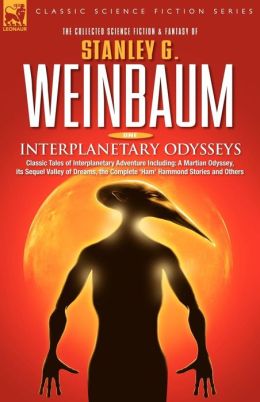
“Bah. I don’t mean to critique the critic, but I think Tim was asleep at the switch here.”
I DO mean to critique the critic, and I think Tim and Mordicai are more than asleep at times. I usually end up being incredibly frustrated reading those Appendix N articles. Sometimes they are very good and even-handed. But I find, more often than not, that they are either unfair or incredibly idiosyncratic in what they criticize.
I still read them though.
[…] last covered Mordicai and Tim’s journey into Appendix N on November 10th, when they discussed Fredric Brown and Stanley G. Weinbaum. The list of authors they’ve covered […]
> But I find, more often than not, that they are either unfair or incredibly idiosyncratic in what they criticize.
James,
Fair enough. But Tim and Mordicai aren’t attempting a definitive work of scholarship here. They’re admitted newbies to many of the writers in Appendix N, and yet they’re plunging in to try them anyway. I think that’s both intriguing and instructive — I like hearing what modern readers have to say about many of my favorite writers, even when it’s not very flattering. It reminds me that most writing dates fairly quickly, and I’m glad I discovered many of these writers when I did.
[…] Black Gate — “It’s clear to me that Gygax included Fredric Brown in Appendix N not because D&D players would find his work a rich trove of resources for world-building, but rather for the obvious craft of his storytelling and his ability to constantly surprise. And because he told damn good stories.” […]